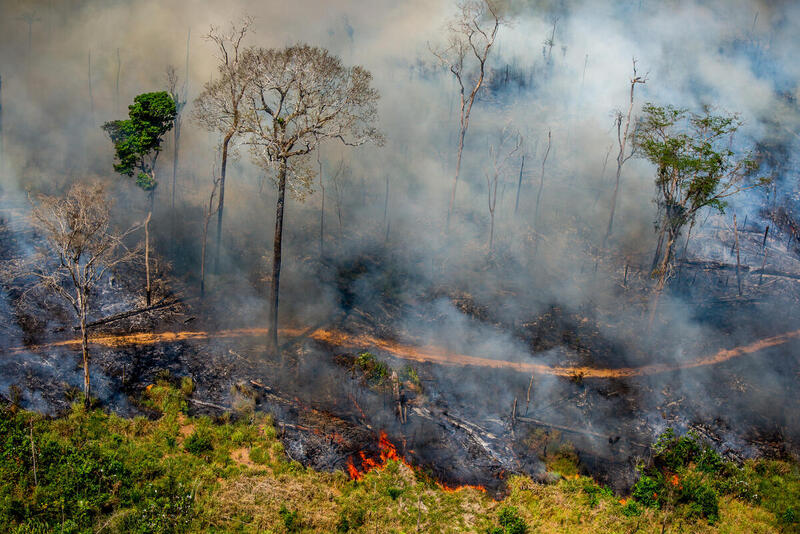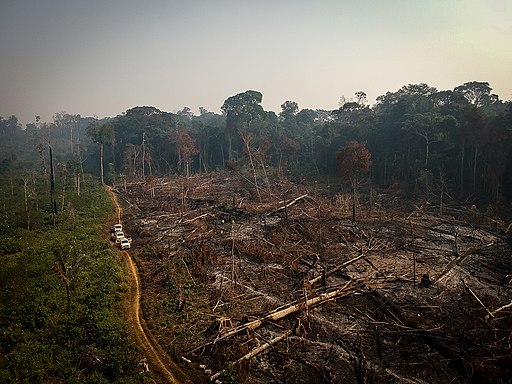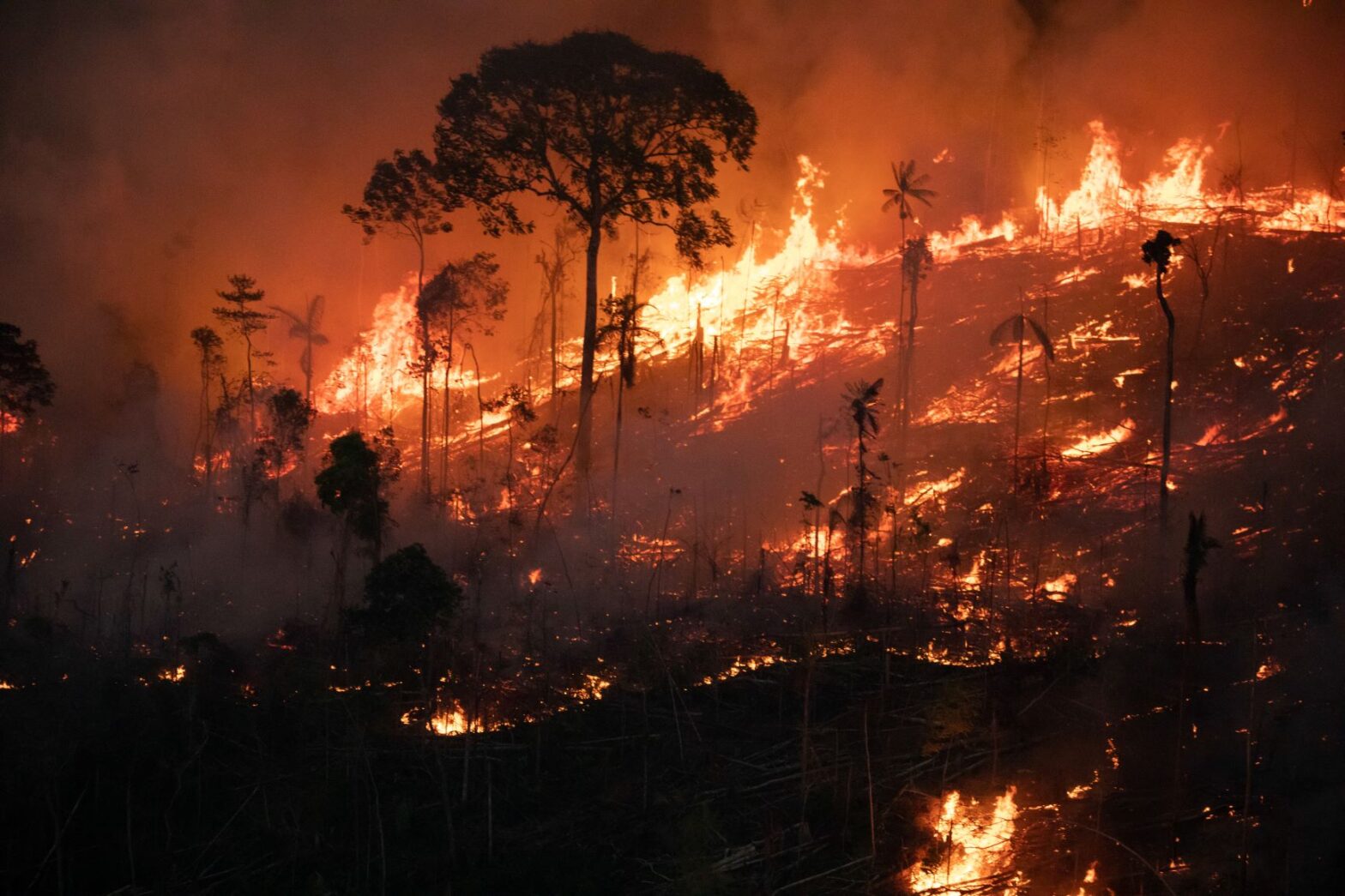An area the size of the city of São Paulo was deforested in the Amazon in July 2022 alone. Pará state leads the monthly ranking; however, the cumulative total for the year shows Amazonas state in the lead for the first time. Estimates suggest that the annual rate of deforestation in the biome will be the highest since 2006.
Under the Bolsonaro government, the months of July 2020, 2021 and 2022 together account for 4,600 km² of forest felled, an increase of almost 160% over that recorded between 2016 and 2018, the three years of the Dilma Rousseff (PT) and subsequent Michel Temer (MDB) administrations. Then the total was 1,800 km².
These data were extracted from DETER: Federal government mechanism for rapid generation of alerts of evidence of alteration to the forest cover in Amazonia and the Cerrado., the deforestation: Complete elimination of native vegetation, generally followed by occupation by other vegetation cover or land use. alert system of the National Institute for Space Research (INPE). PlenaMata has opted to base this comparison on the last three years of each administration — instead of the four years of the full term — because the current INPE methodology took effect from 2016. But if we consider the year left out of this comparison, the number would be even greater as 2019 was the high spot of deforestation alerts since the beginning of the historical series (2,255 km2).
“We still don’t have a policy to combat deforestation, the Amazon Fund remains frozen and environmental fines are still not being collected. Therefore, these figure for alerts continue to be shaped by the interests of the deforesters, illegal loggers, land grabbers and prospectors. They are the ones who today determine how much forest will be deforested, because the government makes practically no effort to curb this”, explains Márcio Astrini, executive secretary of the Climate Observatory.
We still don’t have a policy to combat deforestation, the Amazon Fund remains frozen and environmental fines are still not being collected. Therefore, these figure for alerts continue to be shaped by the interests of the deforesters, illegal loggers, land grabbers and prospectors.
Márcio Astrini, executive secretary of the Climate Observatory
In July this year alone, an area of forest the size of the city of São Paulo (almost 1,500 km²) was razed in the Amazon, according to data from Deter. The number is 1.5% lower than that recorded in the same period last year, but remains high, being the fifth highest of the 84 months that form the historical detection series. The slight reduction in the figures this year is within the margin of error, thus resulting in a technical tie with July 2021.
Climate favours deforestation
Despite this technical tie, July was the month of 2022 with most deforestation in the Amazon, showing an increase of almost 33% compared to June, previously the worst of the year. Traditionally, July has the worst deforestation rates in the region due to the start of the dry season.
“The dry season scenario in the Amazon facilitates all the logistics of clearing the forest, because it is easier to handle illegally logged wood. This is when illegal prospectors, for example, can reach a protected area by land more easily and at less cost. It is also when the forest can be burned, with land grabbing driving this illegal practice”, explains Astrini, who also criticizes the dismantling of inspection bodies.
“This is the period that, naturally, a decent government would prepare itself to confront. That’s not what we have in this government, which allies itself to the orgy of environmental crime and lets illegality run wild. Bolsonaro has systematically sabotaged the Brazilian state’s ability to tackle environmental crime in the Amazon. It has bled Ibama and ICMBio dry and withdrawn their field operations, damaging their capacity to combat the devastation which has grown precisely because of this situation,” says Astrini.
DEFORESTED AREA ALERTS IN JULY 2022
Pará: 506 km²
Amazonas: 492 km²
Mato Grosso: 217 km²
Rondônia: 170 km²
Acre: 78 km²
Maranhão: 19.5 km²
Roraima: 3.83 km²
Amapá: 0.53 km²
Tocantins: 0.50 km²
Source: Deter/Inpe
Amazonas continues to be the leader in the cumulative total for the year
In the first seven months of this year, almost 5,500 km² were deforested in the Amazon, a record in Deter’s time series for the period. For the same period in 2021, the area that was the object of alerts was 5,102 km². For the first time Amazonas appears to be the state with the most deforestation so far this year, overtaking Pará which has traditionally led the rankings.
Of the ten municipalities with the most deforestation in July 2022, four are from Amazonas, with the spotlight on Apuí and Lábrea, in the south of the state, which top the list. These two municipalities also rank first and second, respectively, in the year-to-date total, helping place their state at the head of the rankings.
According to the former director of INPE Gilberto Câmara, who set up the Deter system in the agency, the forests of southern Amazonia have been under pressure because of the prospect of the expansion of the agricultural frontier in the region known as Amacro, which comprises southern Amazonas, eastern Acre and north-western Rondônia.
A so-called Sustainable Development Zone, Amacro is a projected agribusiness hub in areas that in recent years have become the new driver of deforestation in the Amazon, concentrating 20.8% of the deforestation in the Amazon biome in 2021, according to a MapBiomas report.
“These were areas that until a few years ago were better preserved and that now are the object of speculation, with many people involved in the system of land grabbing. The guy who deforests there is almost never a producer, but a squatter who is part of a scheme that sells the wood. They are also anticipating the growth of the market in that region of Amacro”, explains Câmara.
These were areas that until a few years ago were better preserved and that now are the object of speculation, with many people involved in the system of land grabbing.
Gilberto Câmara, former director of INPE
Astrini, from the Climate Observatory, also attributes the increase in deforestation in the municipalities of southern Amazonas to the expectation of upgrades to the BR-319 highway, which connects Manaus (AM) to Porto Velho (RO). This stretch would cut through some of the best preserved areas of the Amazon rainforest, where Indigenous Lands and Conservation Areas are located.
“The simple announcement of this road has already generated a race between land grabbers and disputes over land ownership. Thus, the BR-319 has been a strong driver of this increase in deforestation in Amazonas, a state that had very low levels of devastation. This is a tragedy foretold and rubbed in the faces of all Brazilian authorities, and it is taking place under this government”, says Astrini.
From a land tenure perspective, almost 30% of deforestation in the Amazon in July this year took place in areas registered under the Rural Environmental Registry (CAR), an electronic self-declaratory instrument for the regularization of rural properties. On the other hand, untitled public forests, both federal and state, were responsible for more than 21% of the devastation in this period.
A new record
In the opinions of Astrini and Câmara, the arrival of the Amazon summer and the dismantling of inspections forecast a worrying second semester for the Amazon, following the trends of previous months.
For his part, the former director of INPE stresses that Deter is the thermometer of deforestation and that he has evidence, based on recent numbers, that deforestation in the Amazon between August 2021 and July 2022, the period which INPE takes as its year for analysis, is greater than in the previous twelve months.
“Deter is telling us that things are bad and that we are heading towards the highest level of deforestation in the last 16 years. Much more forest is being felled, but the Amazon is not getting richer as a result. There was no jump in growth as a result of all this deforestation. Except in the pockets of a small number of people…”, says Câmara.
InfoAmazonia reporting for the PlenaMata project .





